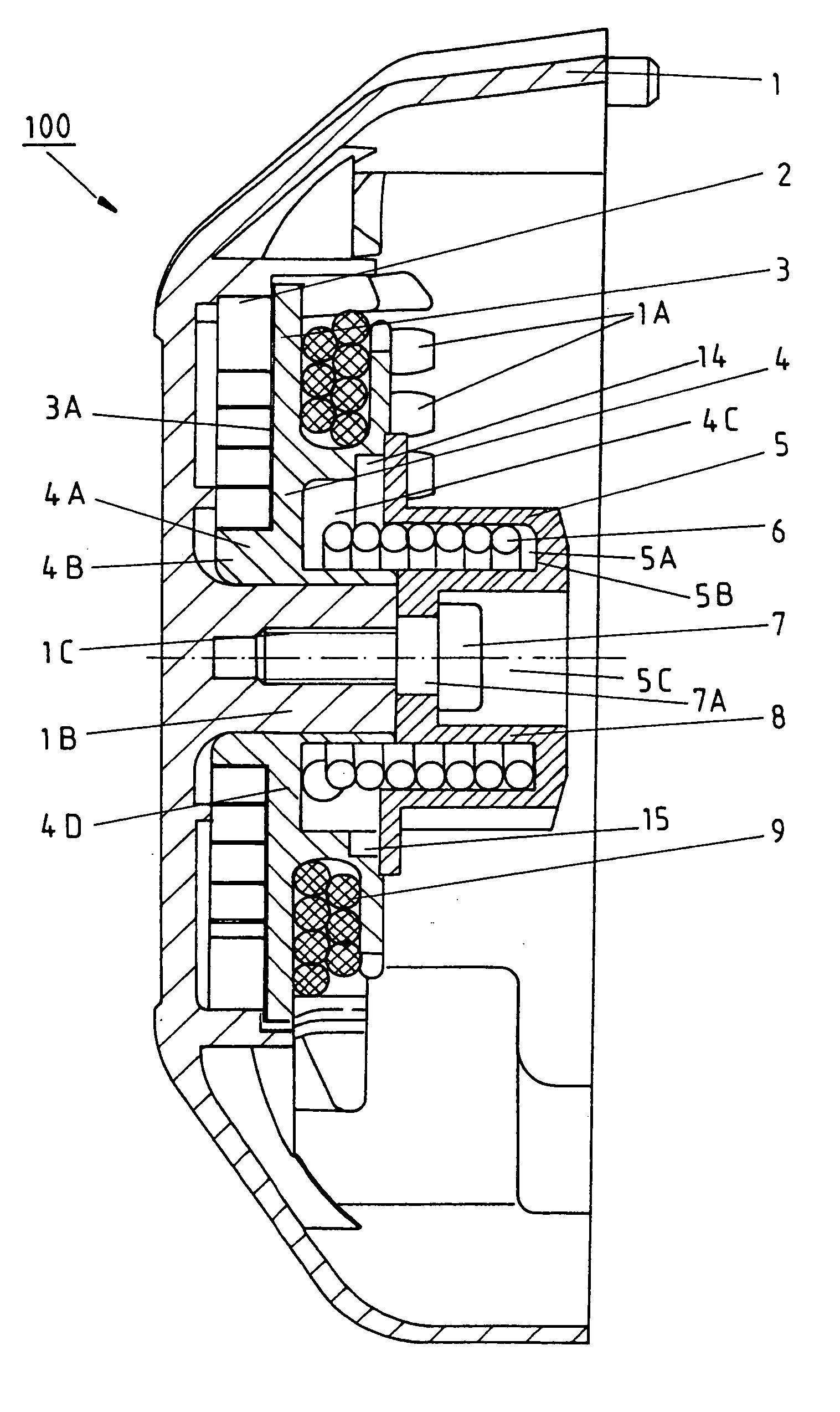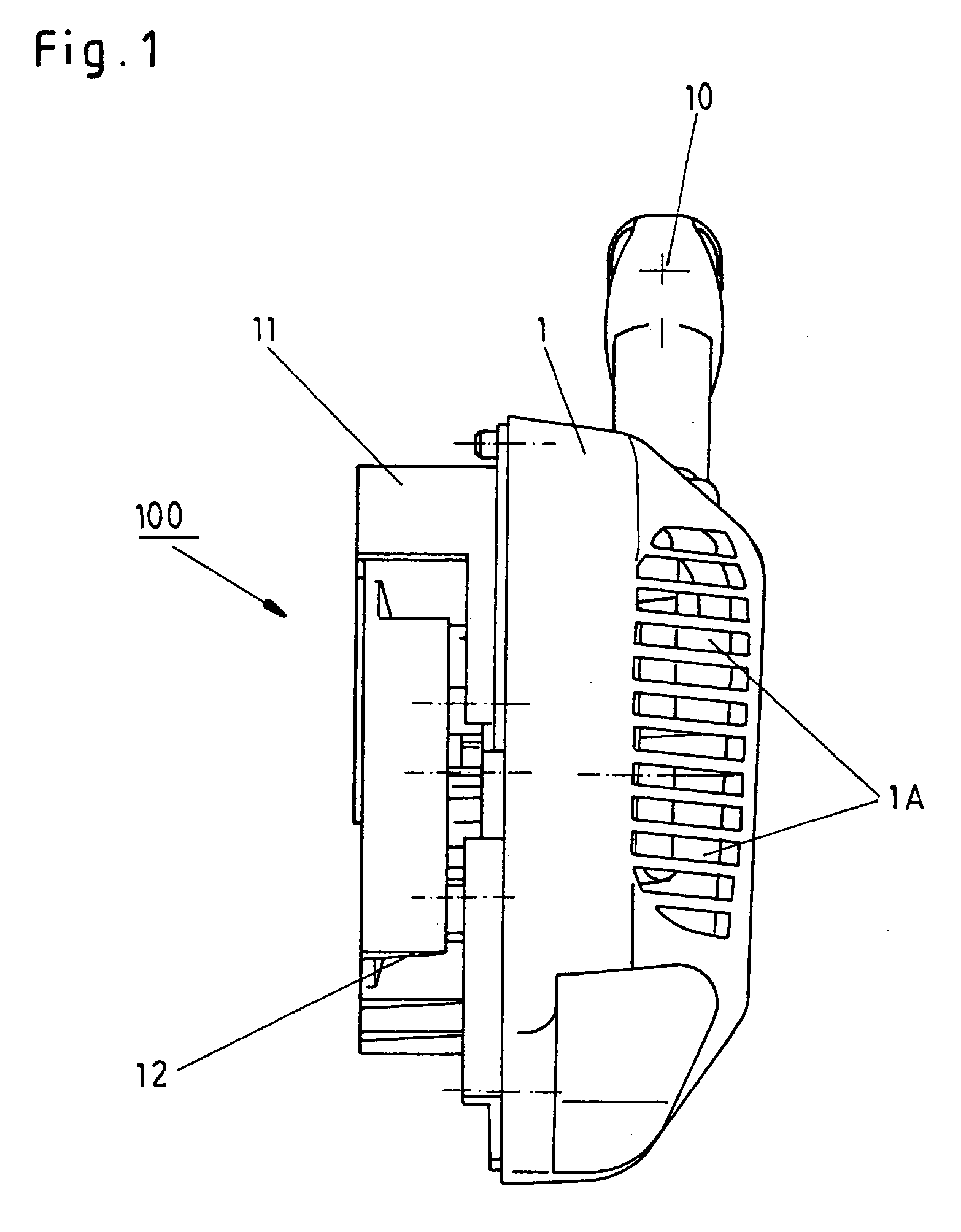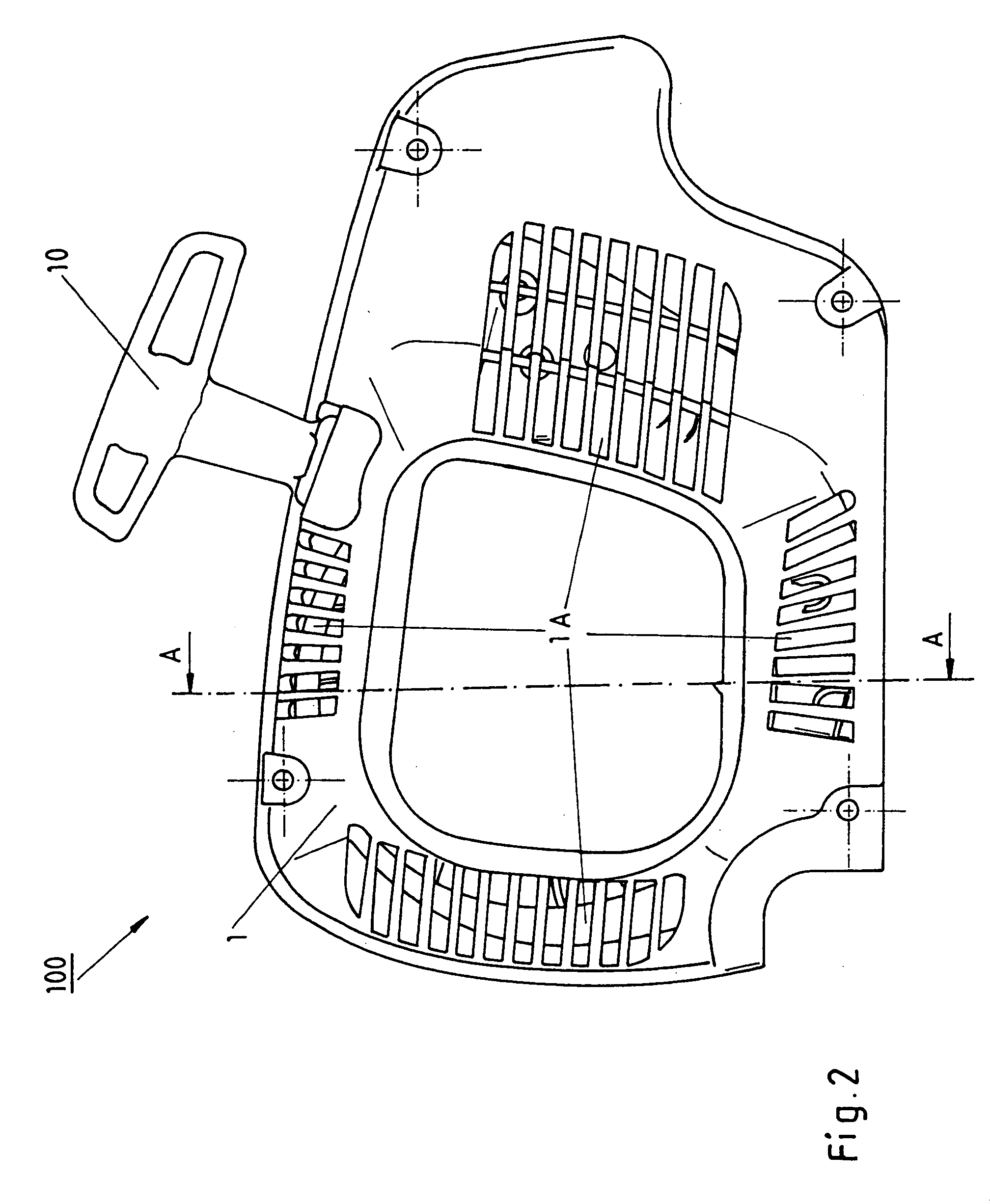Starting device for internal combustion engine
a technology of starting device and internal combustion engine, which is applied in the direction of engine starter, engine components, machines/engines, etc., can solve the problems of high reaction force, difficult to achieve design-related gap in the required quality in series production, and considerable force acting on the hand of the operator
- Summary
- Abstract
- Description
- Claims
- Application Information
AI Technical Summary
Benefits of technology
Problems solved by technology
Method used
Image
Examples
first embodiment
[0068] When this maximum angle of rotation in the magnitude of approximately 270 degrees to approximately 280 degrees has been reached, the spiral spring 6 places itself against the shaft, due to becoming smaller as a result of rotation. In the first embodiment according to FIGS. 1 to 5B, this placement of the spiral spring 6 against the shaft results in a blockage of any further rotation so that the ratchet-type engaging element 5 of the crankshaft is forced to rotate with the pulley or rope drum 4.
[0069] Consequently, the maximum load of the elastic coupling element 6 can be specified in a simple and yet effective and reliable way. As shown in FIGS. 5A and 5B, in the first embodiment this is achieved by providing a limit stop 13 by means of which the angle of rotation of the ratchet-type engaging element 5 is limited in relation to the pulley or rope drum 4 in order to prevent, in this way, any overloading of the elastic coupling element 6 during tensioning onto the block.
[0070] A...
second embodiment
[0074] When this maximum angle of rotation in the magnitude of approximately 135 degrees to approximately 140 degrees has been reached, the spiral spring 6 places itself against the shaft, due to becoming smaller as a result of rotation. In the second embodiment according to FIGS. 1, 2, 3, 6A, 6B, 7A, 7B, this placement of the spiral spring 6 against the shaft results in a blockage of any further rotation so that the ratchet-type engaging element 5 of the crankshaft is forced to rotate with the pulley or rope drum 4.
[0075] Consequently, the maximum load of the elastic coupling element 6 can be specified in a simple and yet effective and reliable way. As shown in FIGS. 7A and 7B, in the second embodiment this is achieved by providing two limit stops 13, 13' by means of which the angle of rotation of the ratchet-type engaging element 5 is limited in relation to the pulley or rope drum 4 in order to prevent, in this way, any overloading of the elastic coupling element 6 during tensioni...
PUM
 Login to View More
Login to View More Abstract
Description
Claims
Application Information
 Login to View More
Login to View More - R&D
- Intellectual Property
- Life Sciences
- Materials
- Tech Scout
- Unparalleled Data Quality
- Higher Quality Content
- 60% Fewer Hallucinations
Browse by: Latest US Patents, China's latest patents, Technical Efficacy Thesaurus, Application Domain, Technology Topic, Popular Technical Reports.
© 2025 PatSnap. All rights reserved.Legal|Privacy policy|Modern Slavery Act Transparency Statement|Sitemap|About US| Contact US: help@patsnap.com



